Vintage Burny “Les Paul” … a Fake that’s Better Than the Real Thing?
Vintage Burny “Les Paul” … a Fake that’s Better Than the Real Thing?

Over the decades I’ve owned a fair number of what I call “big Boy” Les Pauls; you know, the kind with full binding, extra-glossy finishes, and multi-thousand dollar price tags. I have failed to bond with any of them in a sufficient enough manner to justify my keeping them. It’s quite possible that the problem is that I’m just downright spoiled. You see, I’ve had opportunity topossess … but never actually own … several 58 and 59 Pauls. That WILL spoil you, they really are THAT good. Okay, let’s cut to the chase … A couple months back a buddy of mine asks me what I know about the vintage “Burny” Les Pauls. All I knew is that they existed, and that there has been some chatter about them being quite good. It just so happened that I was exhibiting at a guitar show that very weekend, and so I asked around, and in fact played several Burnys. It’s hard to tell on a show floor, but yea, they seemed quite nice, and the fact that they had asking prices from about $700 to over a grand indicated that they were not your run of the mill 70s/80s Gibson knock-off. Actually, the fact that they even appeared in the booths of strictly vintage dealers alongside real-deal holy-grail Pauls spoke volumes!
Which brings us to the guitar on display here. After a week or two my buddy acquired a Burney to his liking and brought it over to the studio for me to check out. I was flat blown away. In every possible way, this “les Paul” is magnificent. It’s neck profile is dead-on to a ’59, not as thin as what Gibby is currently calling the “slim-taper 60s profile”, but not as thick as what they call the “50s profile”. No, it’s just plain perfect, it’s the profile EVERY Les Paul affectionado lusts after. Actually, EVERYTHING about the guitar just flat feels right. The weight, balance, action, and intonation are impeccable, and the pickups sound better than anything Gibson’s made this side of about 1965. I wish I could tell you more about these guitars, but they are new to me, and I’m not anywhere close to an expert. However, a little google search will put you in the camp of plenty of experts in a hurry. What I CAN do is tell you a little more about what impresses me so much about this particular example. And by the way, I can’t even tell you much of anything about the pedigree of this particularguitar, as there are no markings inside or outside other than the Burny logo! It was sold as a 1980s model, and so we assume it is. There, that’s about all I can tell ya, PLEASE … y’all feel free to leave some comments if you can shed some light on this instrument!
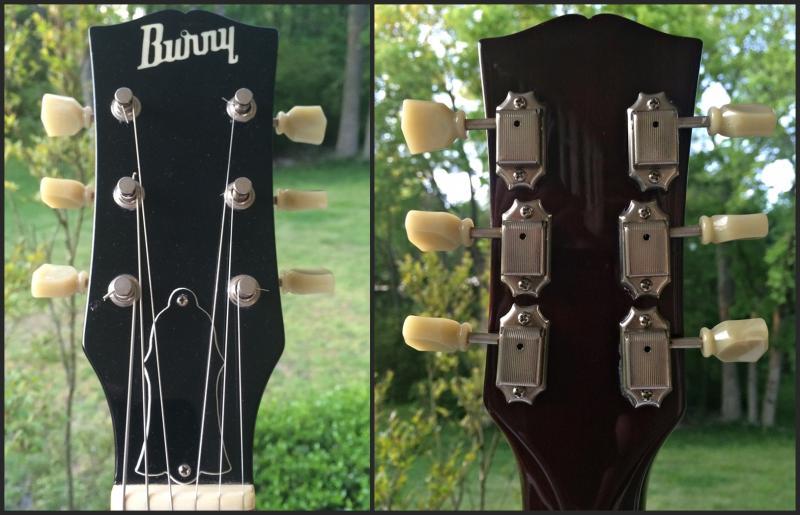
The first thing that stood out to me was the fact that the binding encased the fret edges, just like a bound-fingerboard Gibson.
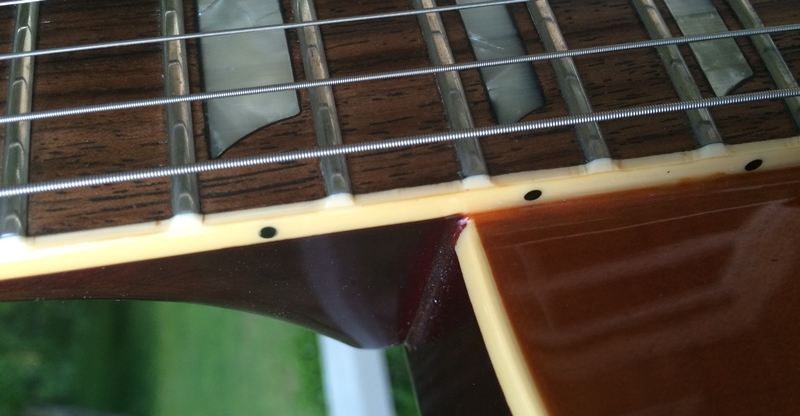
The knobs have a magnificent aged amber look.
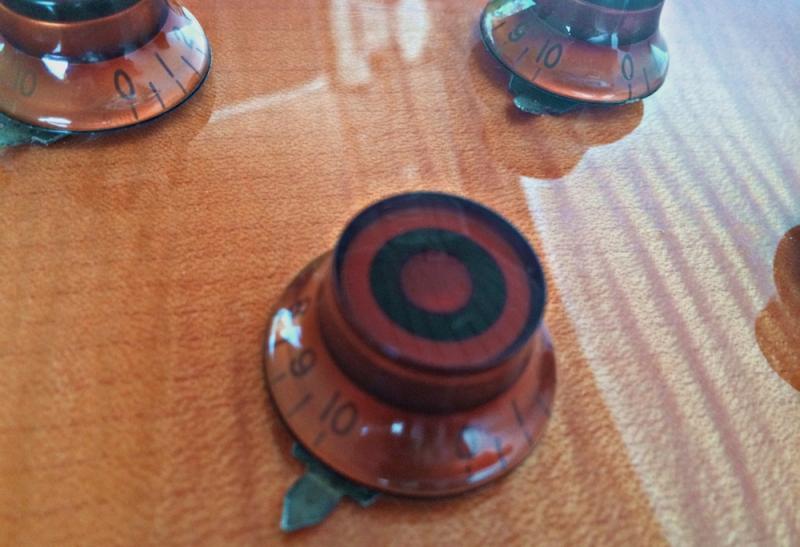
All the plastic has aged (or came that way) in a most deep and luscious way.
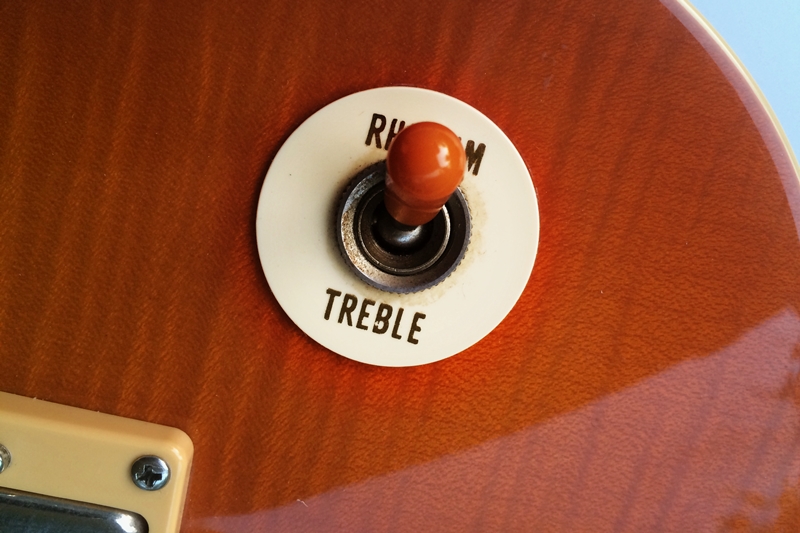
The truss-rod cover looks a little goofy.

She’s sweet. I hope my buddy isn’t looking to get her back any time soon :-)
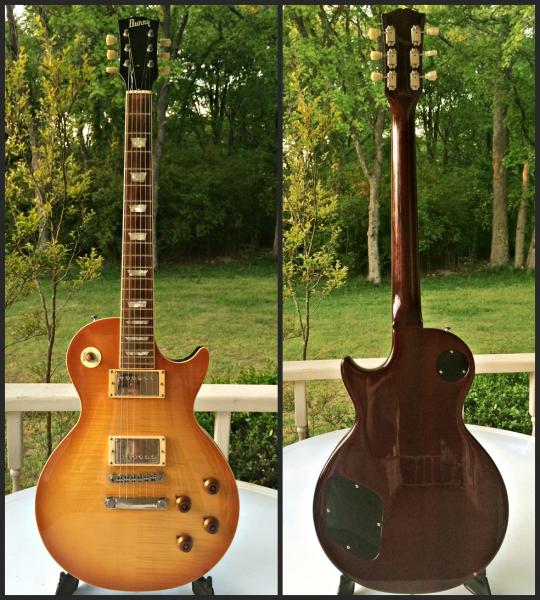
email Vaughn About Vaughn Skow
- VAUGHN SKOW's blog
- Log in or register to post comments


Ssssssh.....don't let on how good they are...lol
http://www.japanguitars.co.uk/burny%20info.html
No Super Grade logo on yours?
Tokais are also very good, I think Billy Gibbons plays one for time to time. I don't know what Gibson's necks are like these days but their Reissue necks used to be slightly too big and the wrong shape for a '59. Their spec was .9" at the 1st fret and 1" at 12, whereas real '59s averaged more like .87" and .95" though they weren't consistent, but the real different was in the profile shape, the reissues being too round, the '59 shape is more like what some people call a boat shape, almost like a very soft V. Removing the cheek materials from the side makes a dramatic difference on how even a very thick neck feels in the hand. From what I've heard Tokai has always acurately replicated this shape. Gibson may be doing it now, I've had no reason to pick one up in years so I don't know.
Can you tell me which model Burney and year this is in the picture that you like. I would like to buy the same ! thank you , Al
From 1982 until 1990 - 1992 there were no serial numbers stamped. The truss rod cover was bell shaped until 1988 or maybe 1989. Then they started using the goofy one before they favored something with 3 screws... So I would dare say your Burny is from 1988 - 1992. You could date it checking the potis if they are still the originals.
You would have to let us know if the top is solid or a veneer to tell which model exactly you have. It could be a FLG or an RLG. For the single rng on the tuners I would say it is a RLG.
Also different tenons where used but I think yours should be a long tenon.
I love my '88 RLC 65!
Its an 1993 LG75-GR ("slash" model, GR for Guns n roses)
1992-93, vh-4 pickups, Stop tailpice - nickel, No Pickguard screw hole.
Their terrific guitars, I have the normal version of it from 93 and its a keeper. had serveral Gibson standard guitars before but the first Burny I got spoiled me.
That is most likely an '88. Some '88s had no marking on the headstock, but had the "winged-bell" truss rod cover. Definitely not a '93 Slash model. Not sure if the previous post was referring to this guitar or possibly his. The Slash has the "Slash" Top Hatted Drawing with "Slash" signature on the headstock, as well as gold speed knobs, not amber top hat knobs. The only sure way to know is to check the date codes on the pots or sometimes, they stamped a reverse date code in the neck pickup cavity, like 920188 -> (19)88/10/29